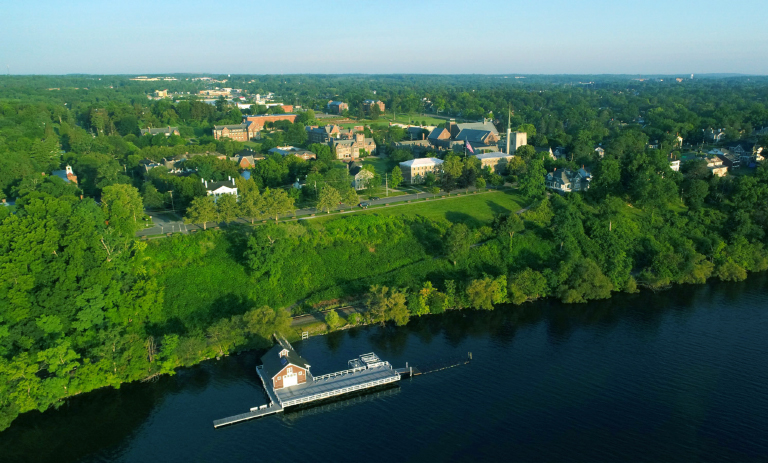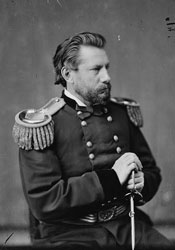
Lives of Consequence
Colonel Albert James Myer, 1847

Inventor
Creative, intellectually curious and ambitious, Colonel Albert James Myer invented aerial telegraphy and is known as the father of both the U.S. Army Signal Corps and the U.S. Weather Bureau.
Though he began his career with the N.Y. Telegraph Company and, later, as an Army doctor, Myer was inspired to devise a system of signaling across long distances, using simple codes and lightweight materials. Known as aerial telegraphy, the system used a single flag, waved back and forth in a code similar to Morse code.
Myer began work on the system during his senior year at Hobart College with his graduating thesis, "A New Sign Language for Deaf Mutes" acting as a precursor to modern aerial telegraphy. After patenting this communication system, the United States Army employed Myer's system with great success during the Navajo expedition in 1860 before formally establishing what became known as the Signal Corps in 1863 with Myer at the helm.
In 1869, a House of Representatives Resolution charged the Army with the responsibility of tracking and reporting the weather, and the task fell to Myer and his Signal Corps. In his role as the head of this organization, which would become known as the National Weather Service in late 1870, Myer would prosper and the relationship between his Signal Corps and Meteorology would become a fruitful one.
Under Myer, the reach of the National Weather Service was expansive. The Signal Corps had well-manned offices from coast to coast whose sole objective was to keep headquarters in Washington and the United States Army well-informed with precise and pertinent meteorological data. In 1873, just three years after the first successfully issued federal storm warning signal, the Signal Corps were broadcasting as many as seventy weather bulletins a day and nearly as many weather maps.
In that same year, at the International Meteorological Congress in Vienna, later known as the World Meteorological Organization, Myer called for the establishment of worldwide weather stations, which would allow for the daily exchange of simultaneous global meteorological data. The 32 delegates representing 20 countries passed Myer's resolution unanimously.
The overwhelming amount of meteorological data reported from all corners of the world made it possible to track massive, transcontinental storms in real-time for the first time in world history. At the time of Myer's death, seven years after the meeting of the first IMO congress, the international weather service had grown to include 36 countries and Myer's vision was rapidly coming into fruition.
Today, the United States Army Signal Corps develops, tests, provides, and manages communications and information systems support for the command and control of combined arms forces. Though the National Weather Service has been absorbed into the National Oceanic and Atmospheric Administration, the work remains much the same as it did in Myer's time.
Myer headed the Signal Corps until his death in 1880. Several key military and civilian locations are named in his honor, including Fort Myer, Va.; The Albert J. Myer Center, the Signal Headquarters building at Fort Monmouth, N.J.; and the General Albert J. Myer Forecast Facility at the Buffalo Niagara International Airport.
